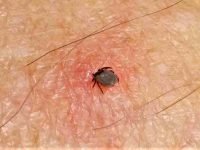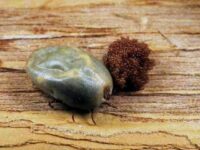Unfortunately, ticks lurk almost everywhere. That’s bad for dogs because their behavior makes them predestined to get ticks very easily. What can you do? Well, if your dog has a tick then you should simply remove it as soon as possible. And to prevent tick infestation, tick repellents and regular control of the fur are among the tasks of every responsible dog owner. Ticks can transmit pathogens to dogs and even after just one tick bite, a dog could become seriously ill.
What are ticks?
All tick species are ectoparasites that must consume blood from mammals, birds, reptiles, and amphibians in order to survive and reproduce. Ticks go through 4 stages of development, in each of which they have to eat at least one blood meal to develop t to the next stage. They are small, spider-like creatures. They have eight legs and can be 1 mm to 1 cm long.
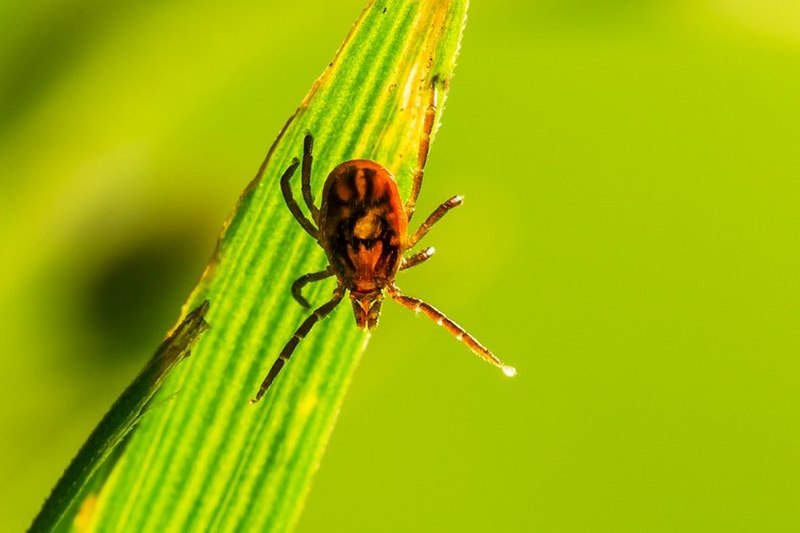
Ticks are common in areas of forest, grassland, and heathland, but can also be found in your garden if you live in an area that is rich in wild animals. Ticks are also common in grazing animals such as sheep, cows, etc., and in their stables. Rodents also play a major role in the spread of ticks. An increase in tick infestation on dogs takes place between spring and autumn, but the parasites are active all year round.
How do I know if my dog has a tick?
Ticks are big enough to spot them. Admittedly, with nymphs, it takes a very close look. You should also regularly check your dog for parasites, especially after walks in the forest or on places where ticks are more common.
Run your hands over your dog’s body to check for small bumps or foreign bodies in the coat. A tick feels like a small crumb or beetle stuck in the hair or on the skin, particularly around the:
- Ears
- Head
- Neck
- Groin
- Armpits
- Feet
Ticks vary in size between 1mm and 1cm long, depending on their age. They look like tiny spiders with a reddish-brown, egg-shaped body. The tiny nymphs are often black and look a bit like a poppy seed. This body becomes larger as it fills with blood.
Where to check the Dog For Ticks
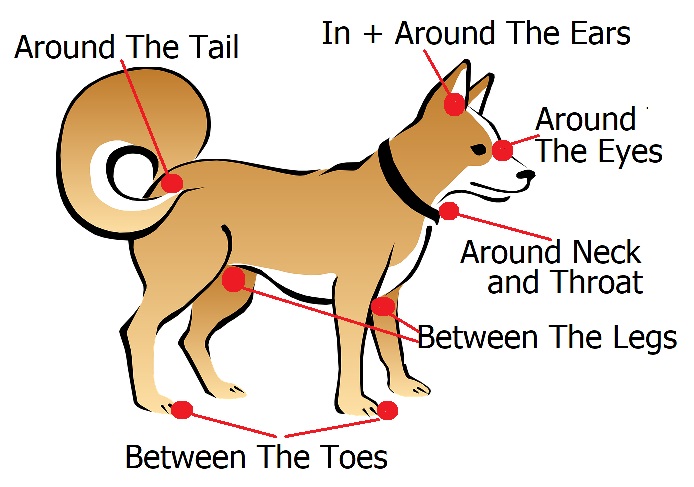
If the dog has been in tick-contaminated areas then it is important to thoroughly search the dog’s fur for parasites. It is best to brush your dog’s fur out completely and look for the crawling brown to reddish-brown tiny creatures. Make sure you thoroughly inspect the area around the head, stomach, groin, ears, and don’t forget the spaces between the toes. If you find a tick remove the parasite immediately.
Why should I protect my dog against ticks?
Ticks are the carrier of many diseases and can cause health problems. The pathogens are in the gut and can be transmitted to your dog during the feeding process. They remain attached and feed on the dog’s blood for several days. Once full, they will fall off. And develop to the next stage or start to lay eggs.
How will ticks affect my dog?
After the tick has found a suitable place on the dog’s body, it pierces the skin with its mouthpiece and pushes its proboscis into the wound in order to feed on blood. The proboscis has barbs with which they anchor themselves to their host.
After the bite, the ticks secrete their saliva into the wound. The saliva is a cocktail of proteins with all sorts of substances that numb the bite and prevent the blood from clotting so it can flow freely.
Species that have no barbed proboscis release a kind of adhesive substance into the wound with which they remain locked to the dog’s body.
Tick saliva contains the following
- An anesthetic to keep the bite and feeding process undetected
- Anti-inflammatories to prevent irritation of the wound due to dogs immune response
- Anticoagulant to prevent blood clotting and flowing
- Possibly a mix of pathogenic pathogens
Bacteria, viruses, and other parasites can live in the tick’s bodies and use them as intermediate hosts. Ticks pick up those pathogens from previous hosts. During their blood meal, the tick regurgitates undigested blood and pathogens from its intestines. These get into the dog’s body via the bite. As a result, the pathogens can lead to dangerous diseases in your dog.
The risk of infection increases the longer the tick is feeding on the dog’s blood. This is why it is so important to remove the tick as soon as you see it on your dog.
Certain female ticks can also cause paralysis in dogs as a result of a toxin they produce while feeding. But this is rare compared to the more common diseases like Lyme disease, Rocky Mountain spotted fever, and Babesiosis, etc. that ticks are capable of causing in your pet.
There are also other diseases that ticks can transmit to your dog. Your veterinarian can advise you on diseases that are common in the area where you live and what are the best measures to protect your pet.
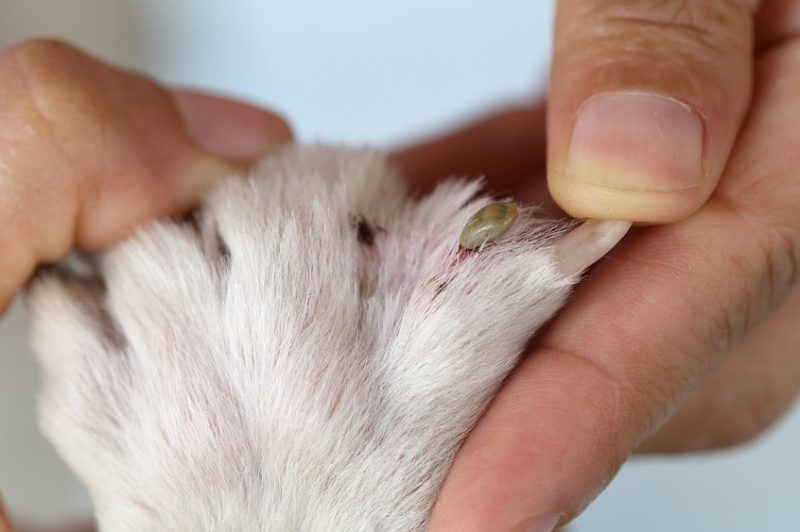
What to do when your dog has a tick?
If your dog has a tick then the best you can do is remove the tick immediately. You can do this with the help of a special tick removal tool. The safest and best way to remove a tick from a dog is to pull it ut with good fine-tipped tweezers or with a special tick hook.
How to remove a tick head from a dog?
If a part remains in the skin, it is not the head, but only parts of the mouth and its stinging tool. In the rarest of cases, this is a problem, because the body usually rejects the foreign body.
When removing ticks stay calm to not frighten your four-legged friend. Get help from a second person, who can stroke it and hold it while the other pulls out the tick.
The blood of a tick can be dangerous so don’t crush it between your fingers. Also, flushing it down the toilet will not kill it. Putting it in rubbing alcohol will do the job better. It’s best to wear surgical gloves when you handle ticks.
How do I prevent my dog from getting ticks?
Preventing your dog from being exposed to ticks is a very difficult task. Ticks can attach to your dog when it goes with you on daily walks or during any other type of outdoor activities like playing etc. This is simply due to the behavior of the dog sniffing around and inevitably passing the typical places at which ticks are waiting for a victim. The best way to prevent ticks from attaching to your dog is by regularly checking your dog’s coat after every walk and regular use of tick control products.
Your veterinarian can advise you better about the best tick control product for your dog according to your dogs health situation. Your veterinarian is also well aware of diseases that are common in your area and can pose a serious risk to your dog.
Methods to repel ticks in dogs
Tick collar
Tick collars for dogs are available in a wide variety of versions, using natural ingredients that are extracted from plants or chemical synthetic man-made ingredients.
The most effective are certainly collars with synthetic insecticides, but these may have unwanted side effects or may pose a health risk if not exactly used as instructed. When putting on the collars, always make sure that you wear gloves and do not come into contact with the collar.
Spot-on and sprays
In spot-on application, the active ingredient is directly dripped onto the skin using a pipette. Sprays are sprayed on as the name suggests. The active ingredients are distributed by themselves and are spread over the entire skin and coat within 24 to 48 hours.
Spot-on preparations or sprays use one or a combination of different active ingredients. Here, too you can choose between products that are based on active ingredients extracted from plants and repellents contain highly effective synthetic ingredients.
Feed supplements against ticks
Natural supplements for feed in form of tablets contain natural active ingredients. There is little research into how well these work. The advantage of those products such as garlic, brewer’s yeast, black cumin oil, or vitamin B also contains no side effects.
Synthetics, there are also various medications that are given orally that contain synthetic ingredients. These substances are distributed in the animal’s body and thus create a protective effect. If effective then the products may have side effects. The pros and cons are to be considered. They should only be used for a short time in an acute severe infestation. Use only as instructed
If you have a tick problem in your yard consider
- Tidy your yard up
- Make your garden less tick-friendly
- Cut back trees and undergrowth
- Eventually treating predestined places with spray
- Build a buffer between the lawn and any woods
- Things like mulch, wood chips help to decrease the migration of ticks into yards.
- Prevent wild animals from coming into your garden
- Keep the area around birdbaths clean and the grass short
- Grow plants that are repellent to ticks
When to take dog to vet for tick bite?
If your dog is severely infested with ticks, you should go to your veterinarian for tick removal. Heavy tick infestations will eventually damage the skin and also increases the chances of anemia, paralysis, and other complications are high. Your veterinarian is the best choice to provide a heavily infested pet with the care it needs.
Severe infestations with dozen or hundreds of ticks must be treated with an insecticide dip and may require multiple treatments to completely eradicate the ticks. Fortunately, this doesn’t happen that often with dogs that are given proper care. Massive infestations can happen with homeless dogs who live on the street or dogs who have not been looked after. Severe conditions should be presented to your vet for proper care and treatment.
Other reasons to see a vet:
- Ticks can be seen deep in the ear canal
- Irritation, redness, or swelling at the point of the tick bite that lasts for several days after removal
- The dog shows changes in behavior, is lethargic, weak, or ailing
- There are clear symptoms of tick-borne diseases
If you don’t see any of these signs but are concerned, it can’t hurt to consult your veterinarian just to be sure. If you still have the removed tick, bring them with you for possible tests to determine whether and which pathogens the critter is harboring in its gut.
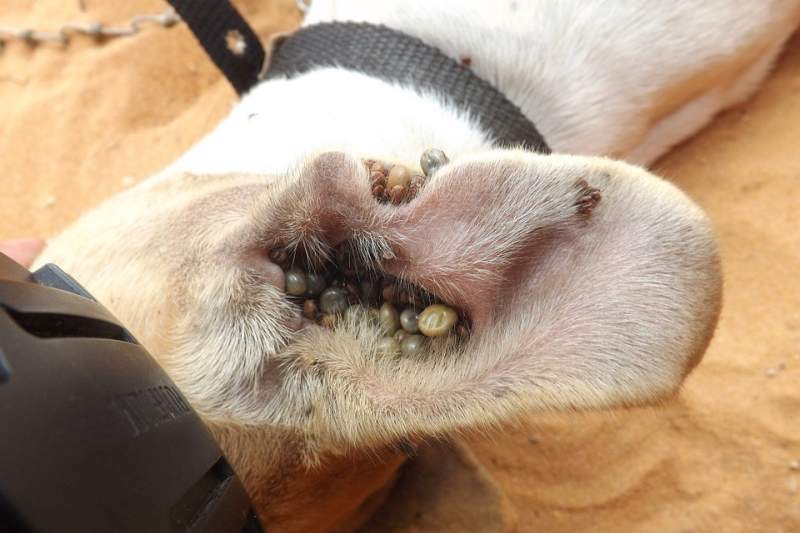
Tick bites can cause serious illnesses in dogs if pathogens are transmitted. Fortunately, these not transmitted immediately. It takes the tick a while to find the right bite site, then the biting process also takes several hours until the tick finally starts feeding. So you have a few hours to find the parasites, and remove them before they start their evil work.
Regular fur control together with careful use of tick repellents is an important and sensitive measure to protect your pets against ticks.
More Info:
When dogs are most likely to pick up ticks: https://www.sciencedaily.com…90938.htm

